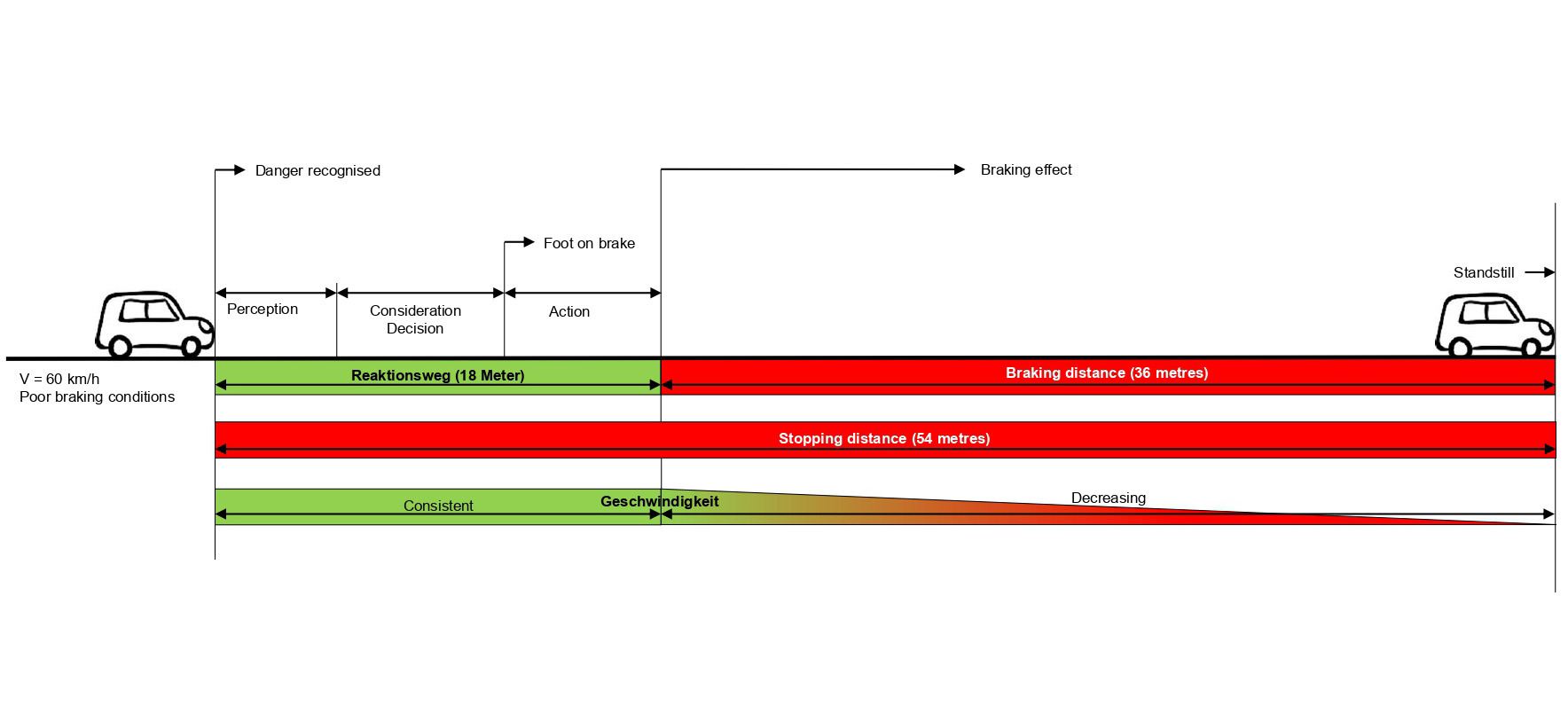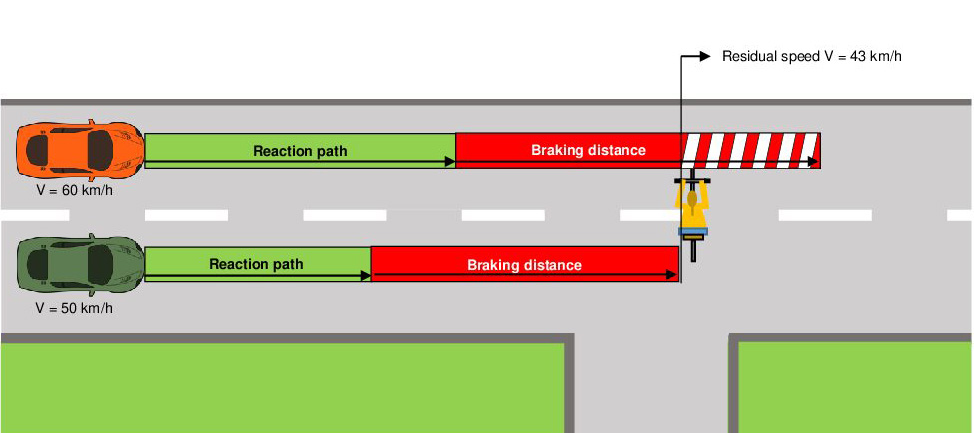Stopping distance
The vehicle in front of you brakes suddenly, now you have to react at lightning speed. In the seconds it takes to come to a standstill, your own car still covers a few metres: this is the stopping distance. Now, how does this stopping distance change with increasing speed and what does grip look like on different road surfaces? We explore these questions in this issue
Components of the stop line
The stopping distance is the distance travelled between recognising a hazard and bringing the vehicle to a complete stop. It is therefore made up of the reaction distance and braking distance.

The reaction distance begins at the point where you see the danger and ends immediately before the brakes are applied. Changing your foot from the accelerator to the brake pedal is therefore counted as part of the reaction distance. The reaction time for very good drivers is 1 second (= approx. 3 metres per 10 km/h). At 60 km/h, the reaction distance is therefore approx. 18 metres. When the driver is ready to brake (foot in front of the brake pedal), the reaction time or reaction distance is reduced by 2/3. The reaction distance is therefore only approx. 6 metres at 60 km/h when the driver is ready to brake. This can be decisive in the event of an accident.
The braking distance begins where the brakes respond until the car comes to a standstill. A distinction is made between poor (at 60 km/h = 6 x 6 metres = 36 metres), good (36 metres – ¼ = 27 metres) and very good (36 metres – ½ = 18 metres) braking conditions. And beware: contrary to what many people believe, the braking distance does not increase linearly, but as the square of the speed: at twice the speed, the braking distance is therefore four times as long.
Are you already braking or are you still reacting?
The following factors can lengthen or shorten the reaction distance as well as the braking distance in an emergency manoeuvre:
| Extension of the reaction path | Shortening the reaction path |
|---|---|
| due to the speed | by creating the braking readiness |
| due to fatigue | due to increased concentration |
| due to distraction (e.g. smartphone) | through adapted speed |
| under the influence of drugs or alcohol | through attention |
| due to taking medication | through foresight |
| Extension of the braking distance | Shortening the braking distance |
|---|---|
| due to the speed | through adapted speed |
| due to wet or icy road surface | due to optimum traction |
| through curves or slopes | due to increased brake pressure |
| due to dirty road surface | by the type of braking |
| due to poor traction | through a gradient |
The aforementioned road grip also plays a central role in connection with the braking distance. Compare the grip values shown here under different conditions:

Residual speed
At the point where the green car (initial speed 50 km/h) can stop, the orange car (initial speed 60 km/h) is still travelling at a residual speed of 43 km/h. And this at “only 10 km/h”. And this with “only” 10 km/h higher initial speed! A lot of speed is only reduced in the last few metres. With this residual speed of 43 km/h, you would crash into a person or an obstacle, which would have fatal consequences. Reason enough to stay focussed and drive at an appropriate speed.
At the point where the green car (initial speed 50 km/h) can stop, the orange car (initial speed 60 km/h) is still travelling at a residual speed of 43 km/h. And this at “only 10 km/h”. And this with “only” 10 km/h higher initial speed! A lot of speed is only reduced in the last few metres. With this residual speed of 43 km/h, you would crash into a person or an obstacle, which would have fatal consequences. Reason enough to stay focussed and drive at an appropriate speed.




